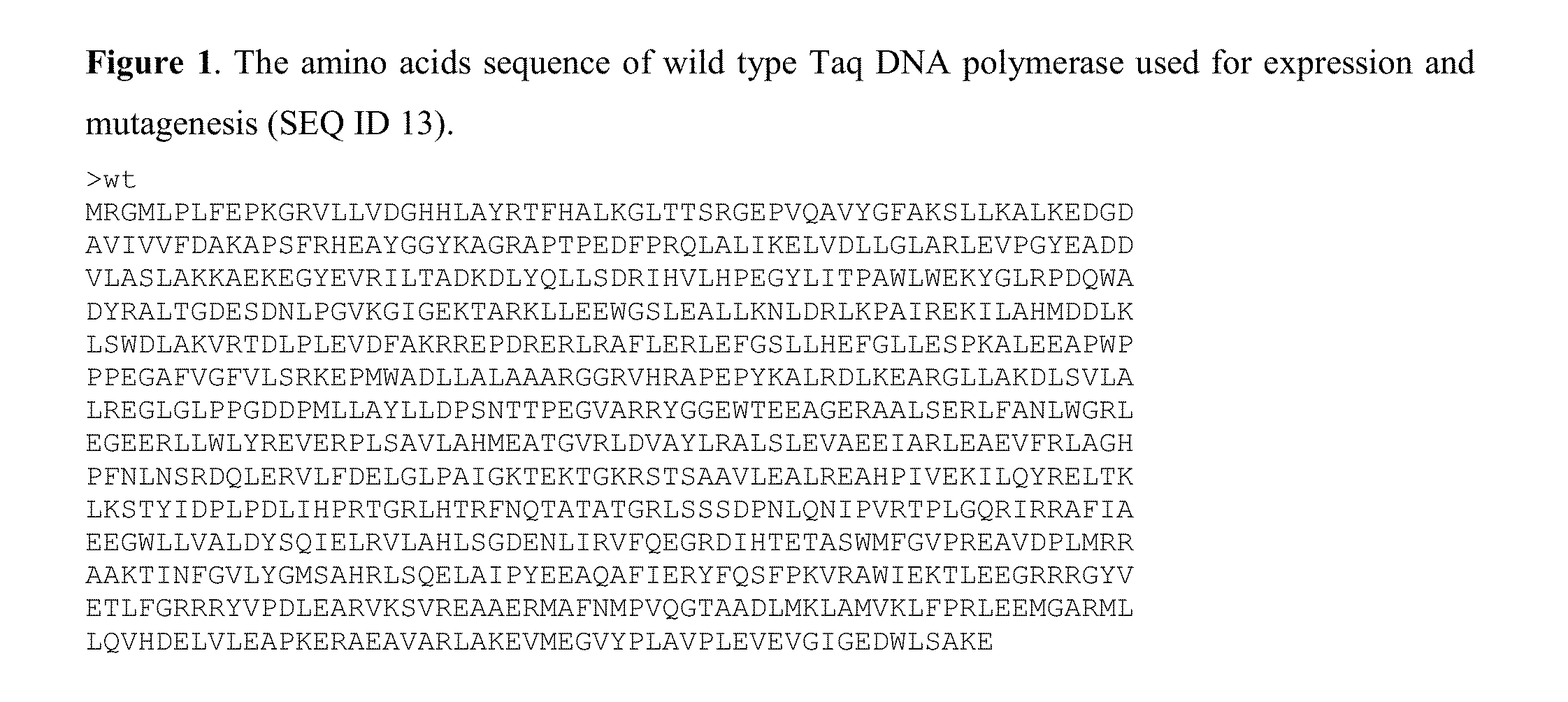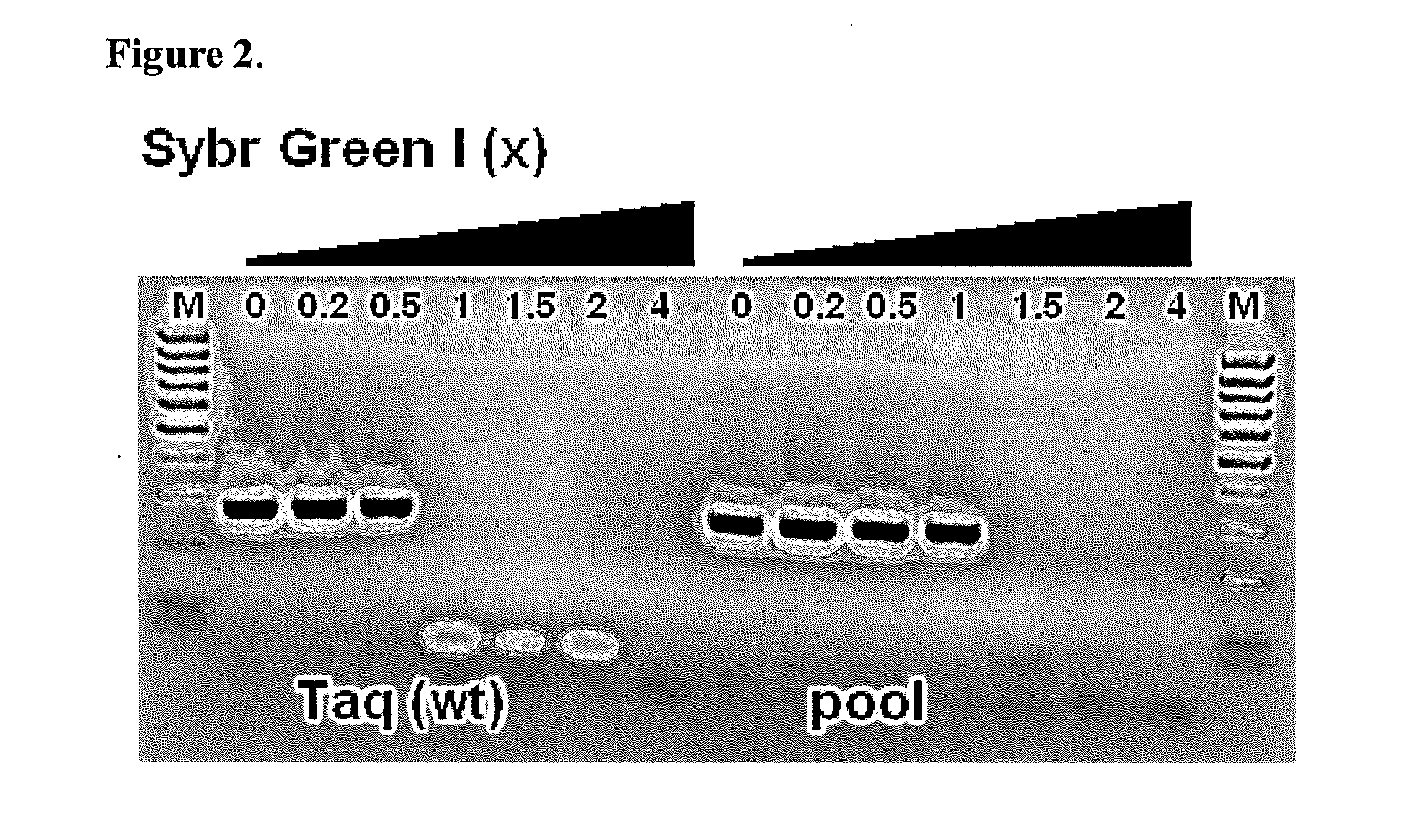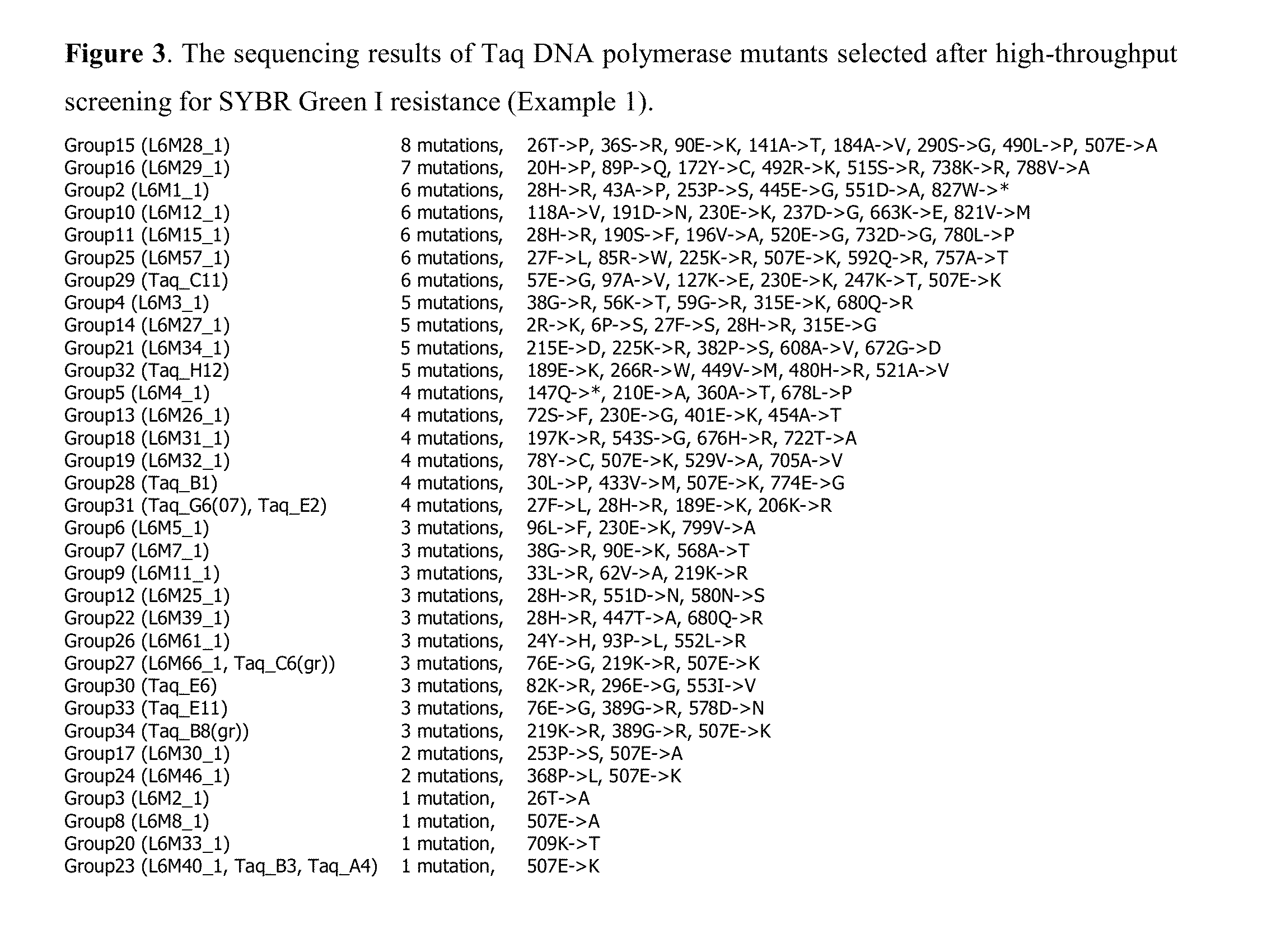DNA Polymerases
a polymerase and dna technology, applied in the field of dna polymerases, can solve the problems of reducing pcr efficiency and sensitivity, and achieve the effects of increasing resistance to sybr, shortening dna elongation time, and increasing resistance to blood
- Summary
- Abstract
- Description
- Claims
- Application Information
AI Technical Summary
Benefits of technology
Problems solved by technology
Method used
Image
Examples
example 1
Mutant Taq DNA Polymerase Library Screening for Increased Resistance to SYBR Green I Dye
[0043]Taq DNA polymerase is widely used in qPCR because it is a robust and efficient enzyme, which has 5′-3′ exonuclease activity (required to activate Taqman probe), no 3′-5′ exonuclease activity (no degradation of PCR primers) and is not sensitive to dUTP used to avoid contamination in qPCR master mixes. SYBR Green I intercalating dye used in qPCR inhibits Taq DNA polymerse (Nath et al., 2000) and can decrease PCR efficiency and sensitivity. In some cases problem can be solved by adjusting buffer composition, reaction conditions and / or using higher amounts of Taq DNA polymerase.
[0044]In order to select for Taq DNA polymerase mutants with increased resistance to SYBR Green I we have performed directed evolution of Taq DNA polymerase. The amino acids sequence of parental wild type Taq DNA polymerase used for mutagenesis is given in FIG. 1. The initial library of genes (L0) coding for mutant Taq D...
example 2
Mutant Taq DNA Polymerase Library Screening for Increased Amplification Speed
[0059]PCR and qPCR applications are widely used in almost all molecular biology, biochemistry and clinical diagnostic laboratories over the world. Faster PCR applications are highly desirable due to the fact that they decrease time spent for DNA amplification, required machine working time and increase the efficiency of analytical procedure. Fast PCR machines are already available on the market and now the limiting step is the enzyme suitable for fast applications. Taq DNA polymerase, which is widely used in PCR and qPCR, was subjected to in vitro evolution aiming to increase its amplification speed and decrease time required for elongation step during PCR. Two different libraries of Taq DNA polymerase were used for high-throughput screening in this example.
1st Screening
[0060]The same mutant Taq DNA polymerase library (L0) as in Example 1 was used for selection of improved Taq DNA polymerase variants. Sever...
example 3
Mutants of Taq DNA Polymerase Resistant to Different PCR Inhibitors
[0079]Mutant polymerases with increased resistances could be used in PCR and qPCR applications without target DNA purification step (directly after the lysis or after partial / simplified purification step). Consequently we have tested most interesting Taq DNA polymerase mutants identified in example 1 and example 2 in PCR performed with various inhibitors known to be incompatible with wt Taq DNA polymerase. PCR was performed on phage lambda DNA using Taq DNA polymerase (recombinant, Fermentas, #EP0404) and wt His-Taq as the controls. The set of Taq DNA polymerase single amino acid mutants (E189K; E230K; E507K; H28R; E90K; E76K; H676R; L30R; D452N; E734K; D732G; D551N; I553V; G504S; H75R; E76G; E76A; A348V; A439T; E734G) was tested for increased resistance to different PCR inhibitors (blood; SDS, GuHCl, heparin).
[0080]Typical picture of PCR inhibition with blood is given in FIG. 16. Under chosen PCR conditions neither ...
PUM
| Property | Measurement | Unit |
|---|---|---|
| dissociation constant Kd | aaaaa | aaaaa |
| pH | aaaaa | aaaaa |
| pH | aaaaa | aaaaa |
Abstract
Description
Claims
Application Information
 Login to View More
Login to View More - R&D
- Intellectual Property
- Life Sciences
- Materials
- Tech Scout
- Unparalleled Data Quality
- Higher Quality Content
- 60% Fewer Hallucinations
Browse by: Latest US Patents, China's latest patents, Technical Efficacy Thesaurus, Application Domain, Technology Topic, Popular Technical Reports.
© 2025 PatSnap. All rights reserved.Legal|Privacy policy|Modern Slavery Act Transparency Statement|Sitemap|About US| Contact US: help@patsnap.com



